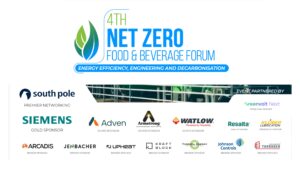The rise of AI agents for energy optimization is hard to ignore; vendors are pushing full-stack automation, and industrial leaders are starting to test the waters. From forecasting grid exposure to bidding in energy markets, these tools now do things that once required a team. But as impressive as that sounds, none of it answers the real question facility leaders are asking: how will AI change the energy manager role in Europe?
This article breaks it down clearly. You’ll see where humans still lead, what AI systems do well today, how the energy manager’s role is shifting, and what’s holding full automation back. So, this is a grounded analysis of what 2025 industrial operations are facing—and what could change by 2026.
Where Human Energy Managers Still Outperform AI in Industrial Contexts
Factories are automating fast, and many are testing AI agents for energy optimization on live production floors. But there are still clear areas where experienced humans outperform any machine-led logic. This section walks through four specific situations where human energy managers consistently bring more value than any software, no matter how advanced it claims to be:
Discretion in Anomaly Interpretation: Why Humans Catch What Algorithms Miss
AI in energy sector only knows what it’s been trained on. If something falls outside the dataset, it often gets ignored or misclassified. That’s a serious problem in factories, where energy spikes might not follow past patterns. For example, a grinding unit may draw extra power for a few seconds before it fails; a trained human often picks that up by cross-checking with past sensor drift, vibration feedback, or even recent repair logs. A machine might just dismiss it as noise.
Also, humans know when not to act. If a plant recently cleaned a line or brought a machine back into service, the power draw will naturally look odd for a while. A human energy manager knows that and waits. But artificial intelligence energy management tools don’t have access to that informal context unless someone builds it into the system, and most sites don’t. That’s why anomaly detection still needs a person with real site awareness.
Cross-Disciplinary Conflict Resolution in Energy Projects
A big part of energy management has nothing to do with equipment—it’s about getting different departments to agree. Suppose the production team wants to increase line speed during peak tariff hours. This may boost output but push the site over budget. The energy manager steps in, pulls the numbers, and explains why delaying the run by an hour could save €3,000. People listen because the manager knows the plant’s priorities and can speak everyone’s language.
AI tools don’t do that. They can’t call a meeting, mediate between the facility and procurement, or explain to legal why a new load shift plan still meets contract terms. AI in energy sector systems may surface options, but they don’t get buy-in. And without alignment across functions, energy initiatives stall. Human energy managers make those moves happen by solving people’s problems that machines can’t even see.
Managing Utility Negotiations During AI-Led Load Shifting
Let’s say an AI agent drops your factory’s load by 30 percent during a price spike. Sounds efficient—but if your utility had requested advance notice or required flat baseload as part of your tariff, that shift could trigger a penalty. Utilities don’t negotiate with algorithms. They call the facility manager. This person needs to explain what happened and why it won’t happen again, or justify why it should keep happening.
This is why companies still rely on humans to supervise smart systems. Even the best AI energy manager needs oversight when financial risk is on the table. Grid agreements often include flexibility terms, balancing thresholds, or restart windows. Human managers handle those rules in real time; they also know who to call when something feels off. Without that human layer, companies expose themselves to contract breaches or damaged supplier trust.
Ethics, Liability, and Decision Ownership in Autonomous Energy Systems
AI can optimize for cost or efficiency, but it doesn’t understand responsibility. If an agent decides to cut HVAC load in a pharmaceutical cleanroom and ruins product quality, who pays for the loss? Not the software provider. This decision falls on the facility’s energy manager or technical director. This is why most firms still require humans to review and sign off on critical automation logic before going live.
There’s also the legal side. Insurance carriers won’t underwrite full autonomy without defined human override roles. And regulators expect someone to be in charge. Even if AI agents for energy optimization run most of the day-to-day tuning, a human still holds accountability. Until laws, contracts, and policies change, real people will need to stay in the loop—because they’re the ones who own the outcome when something fails.
What Fully Autonomous AI Agents Actually Do Well in 2025 Industrial Settings
Human managers still handle critical judgment calls, but that doesn’t mean AI is overhyped. In fact, AI agents for energy optimization are already outperforming humans in several tightly defined, repeat-heavy functions inside industrial operations. This section breaks down where these tools add value—what they do better, faster, and more reliably than a person ever could:
Real-Time Load Balancing in Multi-Asset Facilities
Big industrial sites rely on a mix of heavy systems—boilers, chillers, compressors, furnaces, and packaging lines. Before automation, energy managers had to time them manually to avoid hitting peak demand charges. They watched SCADA feeds, tracked load shifts, and staggered equipment starts. It took focus and left plenty of room for error.
Today, agents handle that timing on their own and adjust as conditions change. They constantly monitor load conditions, shift runtime across machines, and prevent demand spikes without needing direct commands. These systems adjust to second-by-second changes in production flow. They don’t sleep, don’t miss events, and never get distracted. AI agents for energy optimization bring tighter load control across assets, which cuts both costs and wear on the system.
Forecasting Hourly Grid Exposure with External Market Signals
Energy prices don’t just move daily—they swing by the hour, and in some markets, by the minute. Human planners can’t keep up with that. But AI in energy sector platforms can pull in dozens of external data feeds: weather changes, grid congestion maps, market forecasts, and past price curves. They synthesize it instantly and project exposure down to the site level.
This matters when a site’s flexible loads, storage assets, or PPAs require precise timing. Agents can tell you—down to the hour—when to curtail use, switch suppliers, or store energy. These forecasts help facilities avoid price spikes and avoid selling back to the grid when rates are low. In short, they bring forecasting precision that simply wasn’t possible at this speed without automation.
Autonomous Bidding in Day-Ahead Power Markets
More industrial firms now participate in energy markets directly, either through aggregators or by bidding flexible capacity on their own. Until recently, this required a trader with deep market knowledge and a tight link to plant operations. But autonomous agents now handle this bidding on their own, in real time, with guardrails set by the energy manager.
The process works like this: the system forecasts site consumption, identifies flexibility zones, estimates market conditions, and places bids based on predefined price floors or availability windows. It updates those bids as inputs shift. That’s something a human team could never do fast enough. For large sites, this makes AI agents for energy optimization financially valuable, not just technically interesting.
AI-Driven Fault Detection for Submetered Assets
Submetering gives facility managers a clearer picture of how each unit behaves, but reviewing that data manually is slow and inconsistent. AI in energy sector handles that better. They look for deviations in real time, across every load segment, and they learn what “normal” looks like for each piece of equipment.
If a motor starts running hotter than usual under the same load, the system flags it before failure. If a compressor draws too much power after startup, the agent knows to investigate. These detections don’t just reduce downtime—they also help prioritize maintenance schedules and reduce energy waste. AI-driven fault detection has become one of the most widely accepted use cases because it delivers immediate ROI and reduces surprise failures across the board.
Reprogramming the Role: What the “Energy Manager” Becomes in an Agent-Led Era
As factories begin to trust AI agents for energy optimization with real-time decisions, energy managers aren’t getting pushed aside; they’re getting pulled upward. Their day-to-day tasks shift, but their importance grows. This section breaks down how the role evolves or the skills for energy managers in the AI era—less hands-on control, more system design, risk strategy, and oversight:
System Architects of Interoperable Energy Stack Layers
No single software platform manages every energy function in a factory. Facilities rely on a layered stack—BMS for HVAC, EMS for electrical loads, PLCs for machinery, and market platforms for procurement. Each layer speaks a different protocol, and many come from different vendors. Energy managers now act as the architects who make these systems talk to each other.
They choose which platforms connect, set data exchange rules, and define when agents can act. A misstep here can break automation across the site. Without a clear system architecture, even the smartest agent ends up blind. Managers must understand how each stack layer fits into the broader energy picture. This includes retrofit strategies when dealing with older plants and phased migrations when deploying newer tools. AI in energy sector tools don’t solve this; they depend on the energy manager to set the rules.
Energy Risk Scenario Architects for Agent Failure Containment
Autonomous agents don’t always behave as expected. A sensor might misreport a value; a price forecast might miss a weather shift; a logic module might loop on a bad instruction. The risk isn’t just technical—it’s financial and operational. That’s why energy managers now design failover playbooks that guide agent behavior when things go wrong.
They map out fallback conditions. If grid frequency drops too low or a critical cooling system fails, the agent must hand control back to a human or switch to a fixed setting. These scenarios are not theoretical. Real factories have faced uncontrolled shutdowns when agents misread live signals. Managers prevent those events by building layered safety nets into the system. This makes them essential, even as agents handle more load balancing on their own.
Designing Reward Structures and Decision Incentives for AI Agents
Every autonomous system runs on incentives. This applies to AI agents for energy optimization, too. Someone must program what “good” looks like—lower cost, reduced emissions, stable load, or a balance of all three. This person is the energy manager. They don’t just tune the system; they define its purpose.
This work includes writing performance objectives, setting penalties for risky decisions, and assigning weights to conflicting goals. If an agent tries to reduce energy use but risks product quality, what takes priority? If a price signal suggests curtailing power, but staff are cleaning tanks, should the system wait? These choices shape how the agent behaves in practice. Managers take on that design role and stay responsible for outcomes.
Human Gatekeepers for Agent-Driven Asset Commissioning and Decommissioning
Agents now suggest when to turn assets on, off, or shift them into low-power standby. But they don’t make the call by themselves. Before shutting down a furnace or cooling unit, someone checks that it won’t disrupt safety, product quality, or planned maintenance. That’s where energy managers come in. They act as the gatekeepers, signing off on automation moves that affect production-critical infrastructure.
This isn’t about control for its own sake. It’s about ensuring that agent decisions line up with site realities. For example, a cooling system might seem idle to a sensor, but staff may be inside the area performing work. Or a battery storage system might need to hold a charge for a known outage. AI energy manager tools don’t know that unless someone feeds it in. This person is the energy manager, now playing a strategic role instead of just managing spreadsheets or meters. These responsibilities reflect the new skills for energy managers in the AI era, especially in high-automation industrial sites.
Infrastructure, Policy, and Interoperability Barriers to Full AI Agent Deployment
Even if a company wants to automate energy management completely, it still runs into obstacles outside its control. Facility infrastructure, broken data layers, conflicting policy rules, and cybersecurity risks all hold back full autonomy. This section walks through four key roadblocks that stop even the best AI agents for energy optimization from fully replacing human oversight:
Fragmented BMS, EMS, and Asset Communication Protocols
Industrial energy stacks rarely come from one provider. A factory might use a legacy BMS from 2009, a modern EMS installed last year, and several asset control systems with proprietary code. None of these platforms speaks the same language, and few share data smoothly. This leaves large visibility gaps, which paralyze agent-based control.
AI agents for industrial energy efficiency Europe can’t act intelligently unless they receive clear, real-time data from across systems. Even a simple task like coordinating a chiller shutdown requires timing inputs from several platforms. Until those protocols align—or until factories invest in middleware with true interoperability—agents will keep hitting walls. Energy managers remain essential for bridging those gaps manually.
Missing Metadata in Plant-Level Systems Limits Contextual AI Decision-Making
Most automation logic runs blind without proper metadata. In many factories, assets are metered, but nobody has tagged what each meter controls, what normal load patterns look like, or what shutdown risks exist. This means when a reading goes out of range, agents don’t know what it means—or how serious it is.
Smart energy systems Europe can only operate when machines and meters are labeled, grouped, and context-rich. If the system doesn’t know that Meter 37 feeds a mixing pump tied to batch quality, it might throttle that line to save energy, not realizing it just ruined a product run. This is where human knowledge still fills the metadata gap and keeps automation safe.
Misalignment Between EU Policy Frameworks and Agent-Based Control Models
European regulations evolve constantly, but AI energy manager systems need fixed operating rules. This mismatch creates problems. For instance, agents might optimize for current tariffs, unaware that those will shift under new CBAM rules or emissions tracking updates. If the system makes a move that was legal last month but not today, it can expose a company to fines or compliance failures.
Human managers still interpret policy in real time. They adjust agent instructions when the law changes, review bids before market participation, and check that decarbonization pathways align with regional ESG frameworks. Without that legal awareness, artificial intelligence energy management tools risk making decisions that look efficient but violate regulatory intent.
Cybersecurity, Redundancy, and Operational Risk in Autonomous Energy Control
As soon as energy control becomes autonomous, security risks multiply. Every connection point—cloud platforms, edge controllers, load agents, sensors—becomes a target. A single breach could crash HVAC, overload transformers, or trigger an unscheduled restart. Managers need to assume that something will fail eventually.
That’s why energy teams now build layered security, define strict fallback modes, and schedule regular override tests. If an agent stops responding, the system must shift instantly to a stable baseline. These plans require human design, frequent testing, and full plant coordination. Until cybersecurity and resilience tools match the ambition of autonomy, facilities will depend on human oversight to keep operations safe.
To Sum Up
Fully autonomous energy management is possible—but not everywhere, and not yet. While AI agents for energy optimization have taken over many repetitive and real-time tasks, they can’t replace human managers who carry the judgment, responsibility, and site-specific knowledge that industrial plants still rely on.
If you want to see how the leading factories in Europe are solving this challenge, you need to be in the room this fall. Join us at the 2nd Industrial Energy Management Summit, taking place 8–9 October 2025 in Berlin, Germany. You’ll hear from real energy leaders deploying smart systems at scale—and learn how they’re rethinking the role of the energy manager in the agent-led future.




